The light bulb is one of the most revolutionary inventions ever, which can now also be controlled via app.
But who invented it? How has it evolved to the present day? Let’s discover the history of the light bulb.
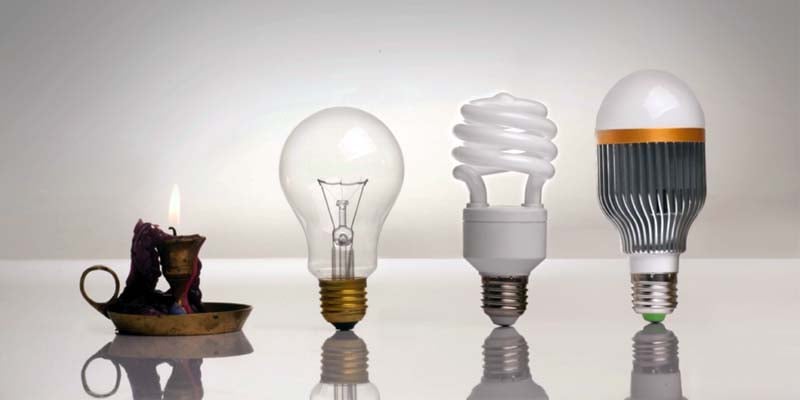
Light bulb evolution
To begin, the history of the light bulb, starts with a famous quote by the writer Agatha Christie:
‘I don’t think necessity is the mother of invention. Invention, in my opinion, arises directly from idleness, possibly also from laziness — to save oneself trouble’.
Who knows whether Thomas Edison, in the process that led to his invention of the light bulb, was driven more by necessity, idleness or laziness. Certainly, he saved a great deal of annoyance for later generations, who were able to phase out older methods of lighting, such as gas and wax candles.
Index:
- Who invented the light bulb?
- The early 1900s and the incandescent light bulb
- Switching to the halogen bulb
- LED lights: a new era
- Wi-Fi light bulbs manageable by App
Who invented the light bulb?
The question actually has a less obvious answer than many people believe. In fact, to be extremely precise, the real father of the light bulb was the Englishman Joseph Wilson Swan, whose patent is dated 1878.
Swan’s light bulb was made from a very thick carbon filament that emitted light and gas when heated. The problem, however, was the excessive soot emitted by this filament, which quickly – a matter of minutes – covered the entire bulb, blackening it and rendering it unusable.
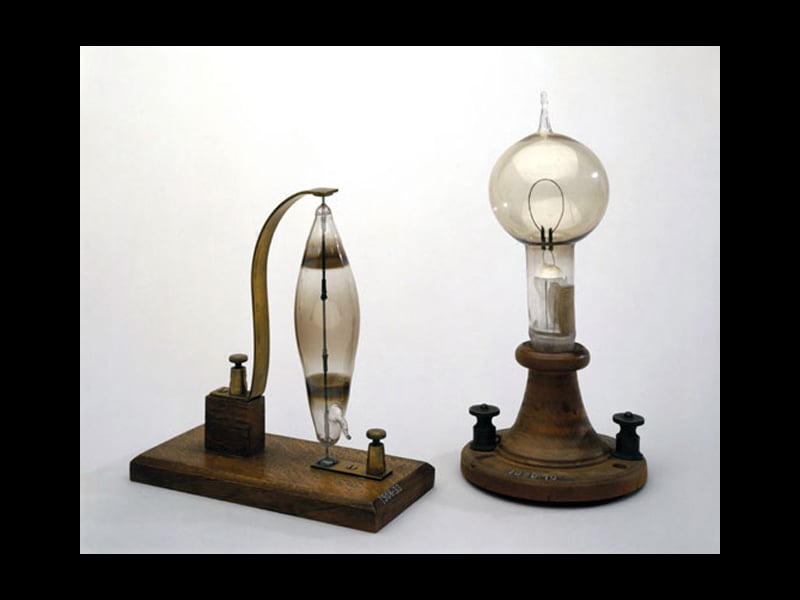
Prototype of the Swan bulb
A year later, in 1879, in the United States, Thomas Edison improved on Swan’s invention. The American inventor patented a light bulb that had a thinner filament and high electrical resistance. The bulb did not immediately blacken, maintaining a constant brightness.
This was the first step in a battle over the authorship of the invention. Swan, starting with Edison’s modifications, improved his light bulb and began selling it in England. The dispute between the two finally ended with the founding of the Edison&Swan company, which effectively monopolised the world market for light bulbs for a long time.
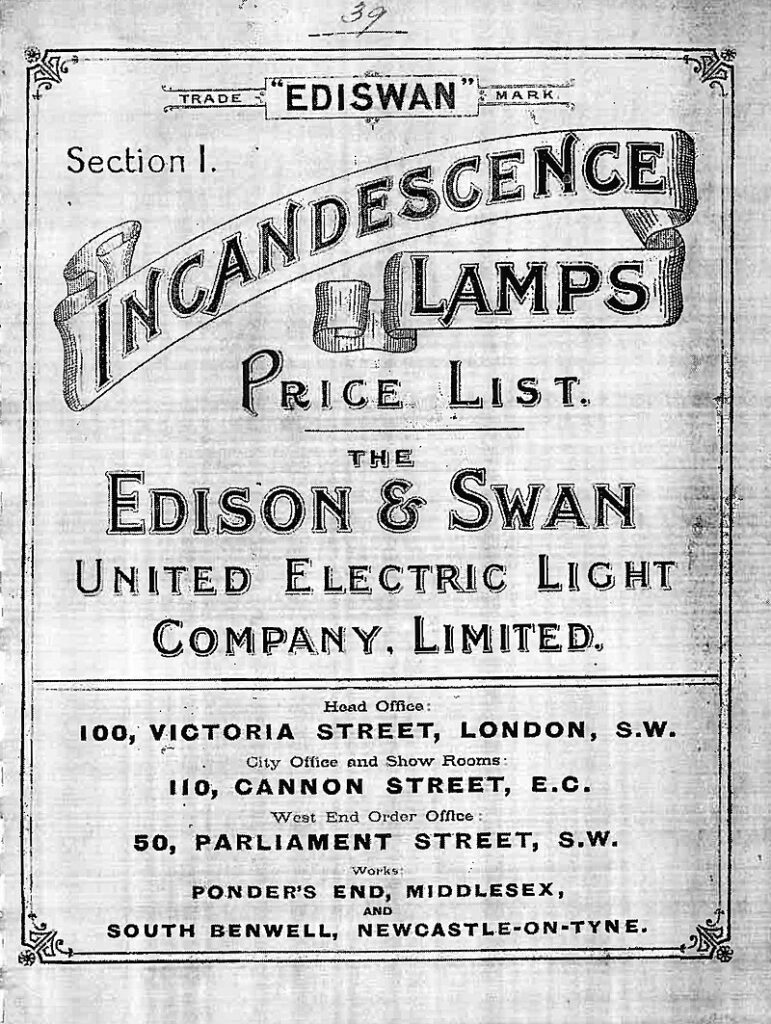
Edison Swan catalogue cover
The early 1900s and the incandescent light bulb
As the decades went by, after the first light bulbs lit by Edison and Swan, this invention evolved very quickly, reaching the first of many breakthroughs, which we owe to the American physicist William David Coolidge.
The American scholar succeeded in installing, instead of the carbon filament, a tungsten filament immersed in a gas; the duration of the illumination was far greater. The tungsten filament, when passed through by the electric current, causes the electrons inside it to reach a higher energy level than normal, creating the so-called light particle photons: light.
In such a bulb, however, only 10% of the energy received is transformed into light. The remaining 90% becomes infrared light – not visible to the eyes – and, above all, heat. The tungsten bulb, better known as the incandescent bulb, is basically the one that has survived to the present day, before the advent of the LED, which has gradually replaced it since 2009.
Switching to the halogen bulb
In the years following Edison and Swan’s inventions, efforts were made, as mentioned in the previous section, to develop alternative technologies to improve the diffusion of light in rooms and above all to reduce electricity consumption.
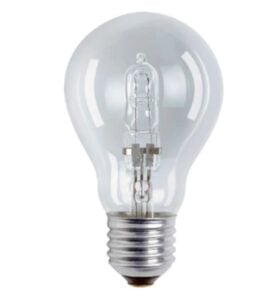
The first step was the introduction, after the Second World War, of the halogen bulb. This type of bulb is characterised by a low-voltage lighting system. Inside there is a reflector that returns some of the heat to the bulb, thus requiring less energy to keep the bulb at the ideal operating temperature.
Halogen lamps were then definitively banned by the European Union in 2018 to entice people to use LED technology, which provides far greater energy savings.
LED lights: a new era
The introduction of LED bulbs on the market was a major breakthrough. The energy savings resulting from their use are clear. They consist of one or more LED diodes, powered by an electronic circuit. In the diode junction, the so-called ‘electron-hole recombination’ takes place, a physical process from which photons and, consequently, light originate.
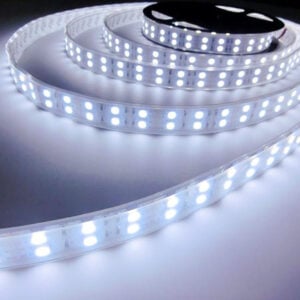
LEDs have a much longer lifetime than incandescent bulbs, which end their life as the filament burns out. LEDs begin to degrade very slowly, with brightness decreasing gradually. Their cost on the market, although reduced compared to a few years ago, is still high. But the savings are still considerable, considering that the average service life is between 50,000 and 80,000 hours.
Visit our lamps and bulbs catalogue ready for delivery
Wi-Fi light bulbs manageable by App
A light bulb that can be switched on and off by pressing a button on one’s smartphone. A step that can be compared to the invention of the remote control for the television. Today, many brands have this type of light bulb in their catalogue.
Once installed, you download an App onto your smartphone through which you can directly control the light bulb, switching it on and off, adjusting its brightness and temperature, as well as the possibility of setting on/off timers and creating ideal scenarios for your day.
In addition to the App, the bulb can also be controlled via voice commands to the Google Assistant or Amazon Alexa. The bulb can last up to 15,000 hours, with 100,000 switching cycles. It has many different types of applications: from general lighting to residential interiors, hotels, bars, shops and other facilities. Outdoors, it can only be used inside fixtures that have the right rating IP rating.

The history of the light bulb from that 1878 until today has been characterised by constant evolution, so much so that it is difficult to predict how it will change in the future, we shall see. After all, to quote Edison himself: ‘To invent you need a good imagination and a pile of junk’.
You might also be interested in:
- Led bulb socket types: how many exist and how to choose
- How to wire a light switch to an outlet
- Dimmable meaning: definition and applications
